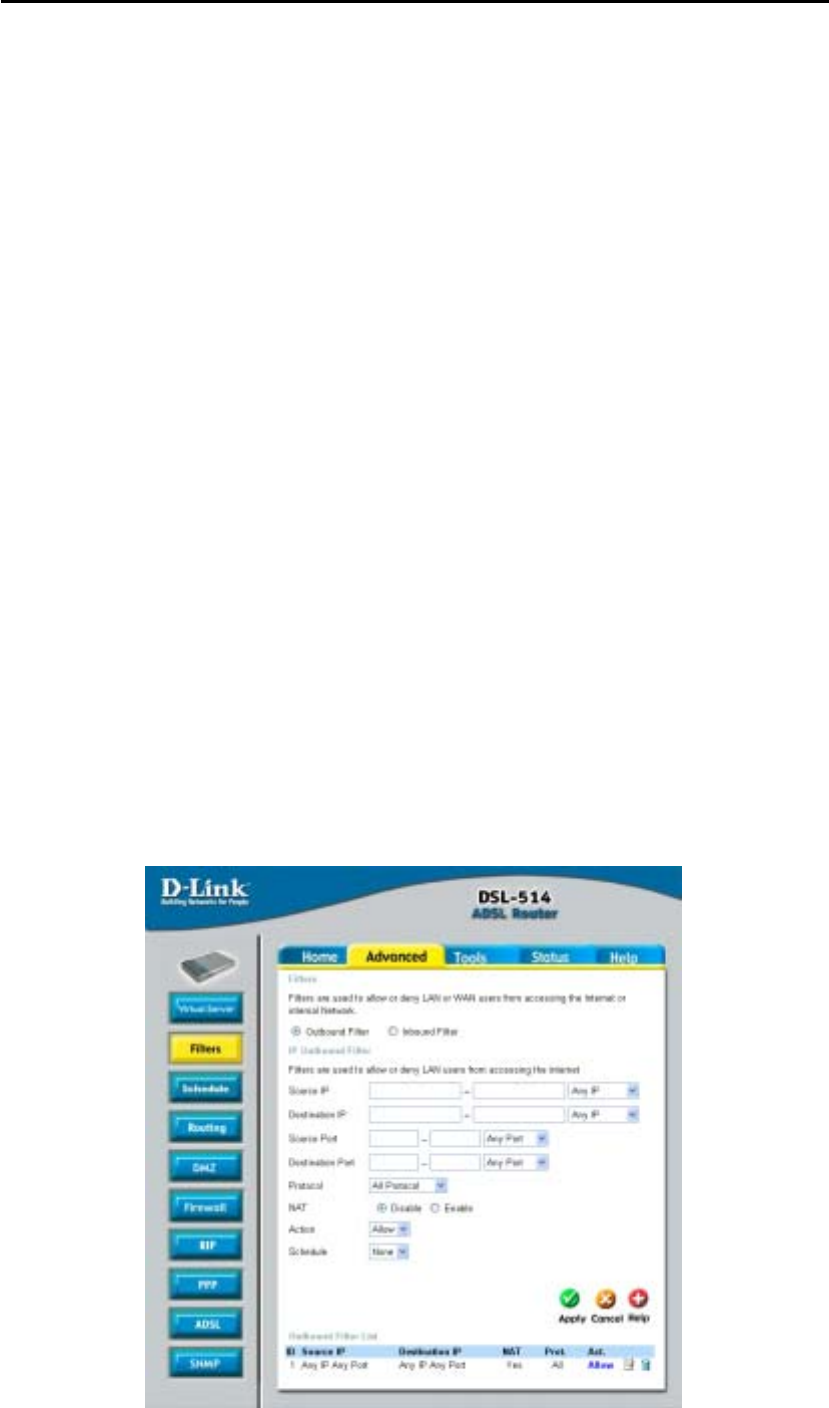
DSL-514 ADSL Router User’s Guide
52
Filters
Filters are used to deny LAN computers from accessing the Internet. The Router can be setup to deny
internal computers by their IP or MAC addresses. The DSL-514 can also block users from accessing
restricted web sites.
Advanced>Filters>Outbound
Filters-Outbound: Use IP Outbound Filters to deny LAN IP addresses from accessing the Internet. You
can deny specific port numbers or all ports for the specific IP address.
Source IP: IP address criteria for the source computer(s) from which the packet originates.
Destination IP: IP address rule criteria for the destination computer(s) (i.e., the IP address of the
computer to which the packet is being sent).
Source Port: Port number criteria for the computer(s) from which the packet originates. This field will be
dimmed (unavailable for entry) unless you have selected TCP or UDP as the protocol. See the
description of Source IP Address for the selection option.
Destination Port: Port number criteria for the computer(s) (i.e., the port number of the type of computer
to which the packet is being sent). This field will be dimmed (unavailable for entry) unless you have
selected TCP or UDP as the protocol. See the description of Source IP Address for the selection option.
Protocol: drop down menu allows you to select the transport protocol for this access policy. If the desired
transport protocol is not listed in the menu, then you can chose "OTHER" option and enter the desired IP
based transport protocol number in the following text box.
NAT: NAT (Network Address Translation) is a method for disguising the private IP addresses you use on
your LAN as the public IP address you use on the Internet. You define NAT rules that specify exactly how
and when to translate between public and private IP addresses. NAT item is Disable by default. You can
enable or disable NAT by selecting the Enable or Disable option in the configuration menu and submitting
the settings.
Action: menu helps in defining this policy as Permit or Deny type policy. Permit type policies allow the
traffic matched by the policy selectors to pass through, where as Deny type policy blocks that traffic.
Schedule: This is following Schedule Configuration. Default setting is None. When Schedule
Configuration add new time schedule, this item will follow new time schedule item.


















